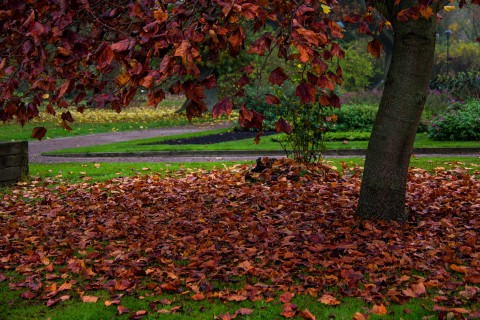The fall rains have started. It’s time to clean up your yard for the winter. You’ll have a healthier landscape next year. Sanitation is an important step to reduce problems from pests and diseases.
Like people, plants need a healthy environment.
To reduce our chances of becoming ill, we get plenty of fresh air and clean our homes to remove bugs and bacteria. Yet we neglect our plants by leaving fruit, fallen leaves, weeds, dead branches, even dead plants in our gardens!
Fruit and fallen leaves are ideal locations for pests and diseases to harbor. Weeds and dense vegetation under trees and shrubs provide hiding places for pests and reduce airflow, increasing humidity and the likelihood of fungal diseases. Good sanitation is important for optimum plant health.
Here’s what to do
Here are a few simple steps to help reduce both the severity of infections and continuing infestation by pests and diseases.
- Remove damaged and diseased branches.
- Prune plants for better air circulation. For dense plants or plants with persistent foliar fungal diseases, winter is a good time to do some thinning. Call In Harmony if you’d like us to prune for you.
- Keep areas under trees clean. Keep the stem free of piled mulch, weeds or other competing plants. Keep weeds and grass cut short under the tree canopy.
- Remove dead plants as soon as possible. A dead plant provides a home for insects that may spread diseases to other plants.
- Rake leaves. You can rake most leaves into your garden beds; they make great mulch. But if you have fruit trees, ornamental cherries, ornamental plums and dogwoods, do not compost these leaves. These trees are prone to diseases and the leaves may be infected. Put them in yard waste bins for pickup.
- The leaves from healthy plants will make good additions to your compost, or can be left to compost in place.
Fruit trees
- Remove diseased flowers that remain on the tree after fruit set.
- Remove early fallen fruit and thin remaining fruit if necessary. Dispose of fruit.
- After harvest, remove remaining fruit from tree and ground.
- If you have any questions about sanitation or whether your leaves are suitable for compost, call In Harmony.
References
Arboriculture: Integrated Management of Landscape Trees, Shrubs, and Vines. Harris, R. W. Prentice Hall, Inc. New Jersey. 1992.
The Simple Act of Planting a Tree: A Citizen Forester’s Guide to Healing Your Neighborhood, Your City, and Your World. Lipkis, Andy, 1990.

